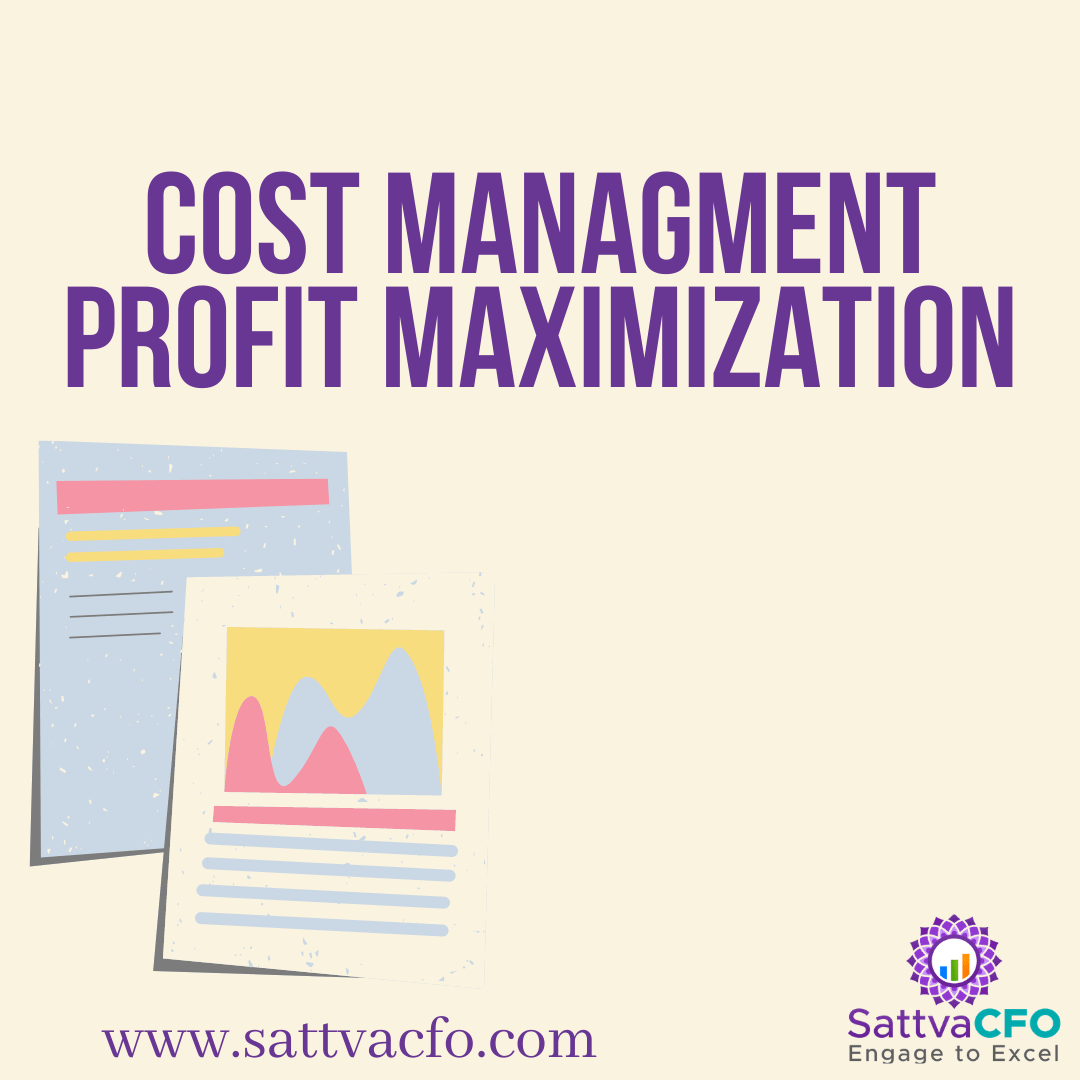In the acquisition of a business, cost management is critical. The traditional cost-management strategy is not customer-centric, and it is believed to be focused on financial aspects. Dynamic forces create rivalry in the corporate world. Also, knowing the price at which customers like to buy is critical for managing rivalry from competitors. The shareholder’s perspective is reflected in financial performance. The goal of cost management is to keep the buyer’s expectations in check. Cost Management & Profit Maximization.
What is Cost Management?
The practise of setting and controlling a company’s budget is known as cost management. Organizations will be able to better estimate and allocate budgets if they have a robust cost management system in place. Cost management is a type of management accounting that helps a company to forecast upcoming expenses in order to avoid going over budget. Many companies use cost-cutting strategies for specific projects as well as their overall business model. Expected costs are determined while the project is still in the planning phase and approved ahead of time when it is applied to a project. Throughout the project, all expenses are tracked and managed to ensure that they remain within the budget. The expected and actual costs can be compared and examined after the project is completed, which will aid future cost management projections and budgets.
What are the objectives of Cost Management?
- The ability to charge a cost per product out of total production is beneficial to cost control.
- To investigate the various costs associated with the product.
- The goal of cost accounting is to figure out how much wastage costs in terms of time, materials, machinery, and expenses.
- It is simple for management to decide on the resources utilised, the time required for production, and the revenues connected with each product during the manufacturing process.
- The goal of cost management is to gather all information about a product’s manufacturing and distribution.
- The cash unlocked is shown by the capital locked or working capital. Inventory, work-in-progress, and finished commodities are all managed with the capital. These details are calculated with the help of cost accounting.
- At a suitable rate, cost control was spread among commodities, overheads, and labour.
- Because cost and capital are linked, it is beneficial for management to be aware of proposed capital projects.
- Because cost and performance are linked, it is beneficial for management to evaluate performance.
- Budget planning and budgetary control are carried out when cost estimation is known.
- Different types of expenditures are associated with different departments. Cost management functions similarly to an information system in that it oversees all departments.
- The human resource development department can utilise cost estimates to decide on bonus or incentive programmes.
- Cost management is useful during the audit because it contains data from all departments.
What are the Cost Management techniques?
The different strategies used to control the cost are activity-based costing, quality management, JIT inventory management, target costing, and balanced scorecard.
The cost is determined by the activity in the first way. The overhead must be divided according to the production units. In the case of administration, salary, and management costs, it is difficult for management to divide the indirect costs. Understanding the relationship between products and services aids in cost allocation with activity-based costing. The ABC technique is primarily employed in manufacturing companies. List the organization’s activities, divide them into cost pools, divide the cost drivers, divide the cost by the cost driver, and then multiply the number of cost and cost driver rates. The ABC technique separates overhead costs by activity, such as direct labour and machine hours. The cost is determined by the low volume and high volume products. With the ABC technique, these costs are spread equally.
The process and process control are the components of the Quality management technique for implementing quality. Here, all members of the company work together to lower real costs and improve product and service quality.
JIT (just-in-time) is an approach that focuses on reducing waste. Maintaining fixed time with raw materials and completed goods lowers inventory costs. For cost management, this strategy is achievable with timely service from suppliers.
Target costing is the process of determining costs based on a desired profit. The difference between the marginal expectation and the consumer expectation is considered the final cost in a competitive company setting.
One of the management systems for tracking day-to-day work is the balanced scorecard method. This strategy aids in project prioritisation.
What is Profit Maximization?
Profit maximisation is a process that businesses go through to guarantee that they have the best output and pricing levels possible in order to maximise their profits. The firm adjusts influencing factors such as sale price, production cost, and output levels in order to achieve its profit targets.
What are our techniques to maximize Profit?
Maximizing profit takes a lot of skill, patience and dedication. Only the right steps can lead one into profit growth.
- Detailed Analysis of financial information
- Identity Trends and Pattern
- Step-up control framework
- Robust Commercial Procurement Strategy
- Build Vendor Base
- Identify opportunities of efficient transaction structuring
FAQ’s on Cost Management & Profit Maximization
What is Earned value management (EVA)?
EVA is a process that allows a project manager to determine the amount of work that was really completed on a project in addition to reviewing cost and schedule information. EVA gives a way for evaluating the project based on its progress. Based on trend analysis or the application of the project’s burn rate, the project manager can anticipate a project’s total cost and completion date based on the progress monitored. This strategy is based on the project’s earned value, which is a significant metric.
What is Value Engineering?
The systematic approach of increasing the value of a product produced by a project is known as value engineering. It is used to evaluate a service, system, or product in order to discover the most efficient approach to manage critical functions while lowering costs.
How SattvaCFO can support in Cost Management & Profit Maximization?
SattvaCFO can drive provides Cost Management & Profit Maximization. Please contact us to avail these services.
Also read:




